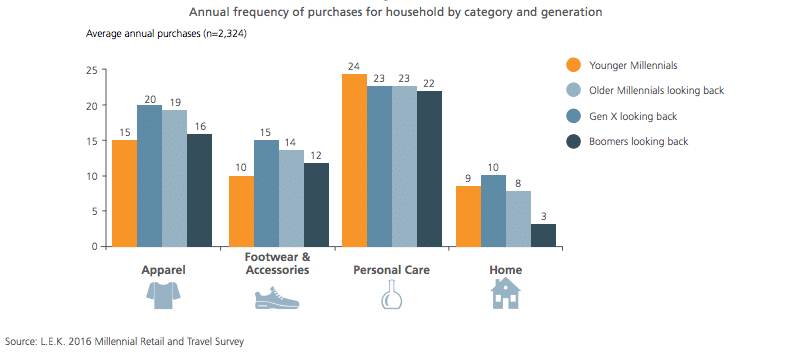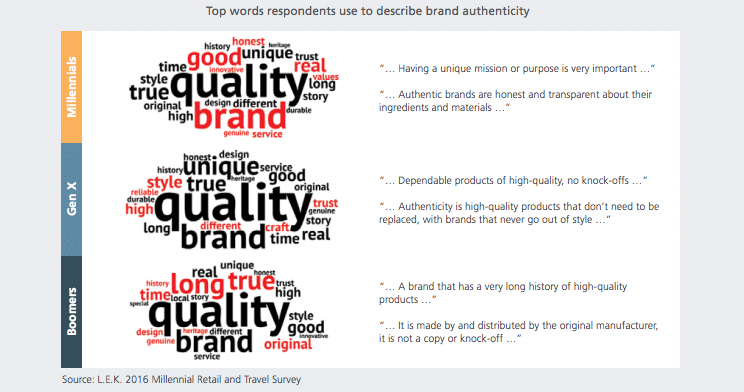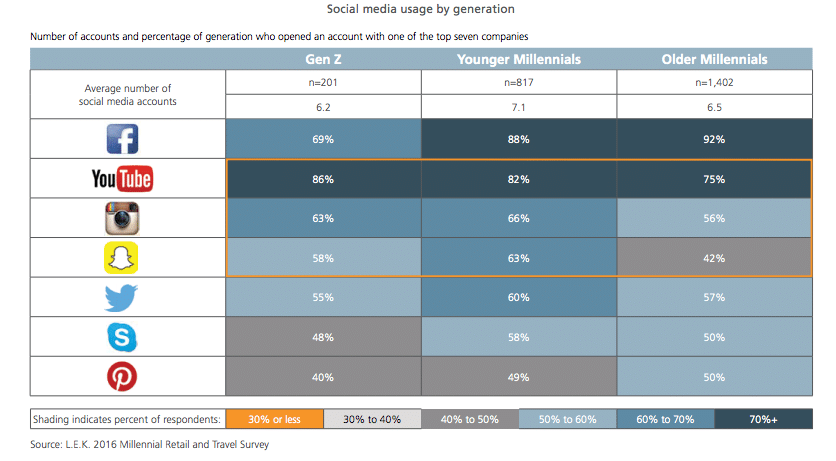Retailers who’ve successfully adapted to new generations of consumers now need to adapt again, according to new research from management consulting firm L.E.K. Consulting. The firm’s newly released study on the Millennial generation shows how stark the latest round of generational changes can be—and describes what retailers will need to do to reach them.
While in many respects Millennials behave like young consumers always have, in other ways they differ sharply from past young-consumer populations. The research provides fresh insight into Millennials and their predecessors in Gen X and the Baby Boom generation—about how they shop, where they shop, what they like to shop for, and how they define key qualities like brand authenticity.
The study, Retailers Play the Generation Game: Lessons from Adapting to Millennials, also looks ahead to Gen Z, which is just entering adulthood, and how they might be different again.
Savvy retailers who want to court Millennials should think more about sub-segments than the whole population, and remember that at the end of the day it’s individual consumer behavior that counts.

“Millennials are sometimes treated as a monolithic group, although they’re not, and it’s often assumed that they behave the way young consumers have always behaved, which is a half-truth at best,” said Rob Haslehurst, managing director in L.E.K.’s Consumer Products and Retail practice and co-author of the report, in a news release.
“To meet the needs of any new generation, retailers need to understand the differences between qualities unique to the generation, behaviors that are common to that life stage, and individual preferences. Our goal was to produce a pragmatic understanding of that change, starting first with Millennials,” Haslehurst added.

The survey of 3,800 U.S. consumers, including 2,200 Millennials and 200 teenagers at the vanguard of Gen Z, maps Millennial preferences and behaviors, compares different Millennial subgroups, and explores how Gen X and Baby Boom consumers behaved when they were the same age.
Retailers are eager to court Millennials—they’re a big population with money to spend
Millennials number 75 million—approximately 30 percent of the U.S. population. They account for approximately 90 percent of first-time mothers today. They spend about $1.2 trillion a year—one-fifth of the nation’s total consumer expenditure.
Millennials don’t act—or shop—alike
Preferences and behaviors differ notably from one Millennial subgroup to another. “By far the most important distinction among Millennials is whether they have children, and their level of education,” said L.E.K. retail practice consultant Shang Saavedra, in the release. “Millennials with children and at least a college education spent sharply more than the next-highest spending group in several categories”—most notably home (68 percent more) but also footwear (56 percent), electronics (52 percent), and apparel and personal care (49 percent each).

Millennials don’t shop the way Boomers or Gen Xers did when they were younger
Retailers are often unsure how much of a generation’s behavior is truly generation-specific as opposed to life stage-related. “Are Millennials truly different from any consumers that have gone before, or are they acting the way young consumers have always acted?” Saavedra says. The research was designed to help answer the question. Previous demographic groups—Gen Xers now aged 35-49 and Baby Boomers now aged 50-69—were asked about how they shopped when they were the same age as Millennials are today. While there were many similarities, certain differences were striking:
Millennials are far more likely to pay a premium for convenience than older generations
Millennials are pressed for time and will spend aggressively for convenience options such as fast, free shipping, prepared meals, and ride sharing.
Millennials spend much more time researching their purchases
They grew up with online research. In categories such as apparel, footwear, and personal care, they spend 30 minutes more on research per purchase than Gen Xers do, and nearly an hour more than Baby Boomers did.
They all value brand authenticity—but define it differently
To older generations, an authentic brand was “genuine” and “timeless.” To Millennials, authenticity means not just product quality, but more so, a brand with “honest values.” They’re the first generation to demand products and brands that are associated with social good.
Retailers should consider these three steps to attract Millennial consumers
To win over Millennial consumers, retailers should:
- Target sub-segments. Find the ones relevant to the brand and figure out how to meet their specific needs. Some Millennial subgroups prefer to buy beauty and personal care products online. Online-only sellers can take advantage – and beat out grocery and pharmacy stores.
- Target the behavior, not the age. Some behaviors transcend generations. Electronics consumers are tech-savvy and shop in the same channels no matter what generation they’re in.
- Personalize. Personalization pairs well with technologies that Millennials like. Retailers can use artificial intelligence to drive personalization down to the individual level.
“Retailers have always had to adapt to new generations of consumers. In the case of Millennials—because they’re a large, high-spending group—the need to adapt is particularly important. But the lesson is timeless—only those that adapt will survive,” said Haslehurst.







